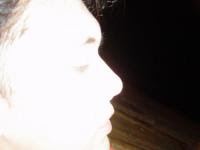
Thursday, March 26, 2009
Monday, March 23, 2009
Brianne folding cranes

I have found a new fascination in folding paper cranes just this month. I don't know why i do it but I suddenly had this urge to fold paper into a shape of a paper crane. It can be an influence of popular culture due to Michael Scofield's (a character in a TV series titled "Prison Break") way of delivering a message to her love one, or it can be something else. So i did my research and you will be fascinated by what I have found.
Check this story out:
An old Japanese legend said that anyone who folds a thousand paper cranes so pleases the gods, the folder is granted a wish. One of the well know story is Sadako and her 1,000 paper cranes. Sadako Sasaki (佐々木 禎子) was a Japanese girl who lived near Misasa Bridge in Hiroshima, Japan when the atomic bomb was dropped on Hiroshima. Sadako was only two years old on August 6, 1945 when she became a victim of the atomic bomb.
At the time of the explosion Sadako was at home, about 1 mile fromgorund zero. By November 1954, lumps had developed on her neck and behind her ears. Then in January 1955, purple spots had started to form on her legs. Subsequently, she was diagnosed with leukemia, which her mother referred to as "an atom bomb disease." She was hospitalized on February 21,1955 and given, at the most, a year to live.
On August 3,1955, Chizuko Hamamoto — Sadako's best friend — came to the hospital to visit and cut a golden piece of paper into a square and folded it into a paper crane. At first Sadako didn't understand why Chizuko was doing this but then Chizuko retold the story about the paper cranes. Inspired by the crane, she started folding them herself, spurred on by the Japanese saying that one who folded 1,000 cranes was granted a wish. A popular version of the story is that she fell short of her goal of folding 1,000 cranes, having folded only 644 before her death, and that her friends completed the 1,000 and buried them all with her. This comes from the book Sadako and the Thousand Paper Cranes. An exhibit which appeared in the Hiroshima Peace Memorial Museum stated that by the end of August, 1955, Sadako had achieved her goal and continued to fold more cranes.Though she had plenty of free time during her days in the hospital to fold the cranes, she lacked paper. She would use medicine wrappings and whatever else she could scrounge up. This included going to other patients' rooms to ask to use the paper from their get-well presents. Chizuko would bring paper from school for Sadako to use.
During her time in hospital her condition progressively worsened. Around mid-October her left leg became swollen and turned purple. After her family urged her to eat something, Sadako requested tea on rice and remarked "It's good." Those were her last words. With her family around her, Sadako died on the morning of October 25,1955.
After her death, Sadako's friends and schoolmates published a collection of letters in order to raise funds to build a memorial to her and all of the children who had died from the effects of the atomic bomb. In 1958, a statue of Sadako holding a golden crane was unveiled in the Hiroshima Peace Memorial, also called the Genbaku Dome. At the foot of the statue is a plaque that reads, This is our cry. This is our prayer. Peace in the world.
There is also a statue of her in the Seattle Peace Park. Sadako has become a leading symbol of the impact of a nuclear war. Sadako is also a heroine for many girls in Japan. Her story is told in some Japanese schools on the anniversary of the Hiroshima bombing. Dedicated to her, people all over Japan celebrate August 6 as the annual peace day and the crane becomes the symbol of World peace.
Nice story huh,,,
Therefore, it can be popular culture which i can be a stereotype who gets influenced by TV. It can be lore which i can still believe in tradition. It can be a a symbol of world peace which i can still care for others. Finally, it can be an ancient Japanese legend that promises anyone who folds a thousand origami cranes will be granted a wish by a crane which i can, safe to say "i am longing something more in this life". I need one more wish, so i will keep on folding...
author: brianne agbulos
source: wikipedia
photography: brianne agbulos
